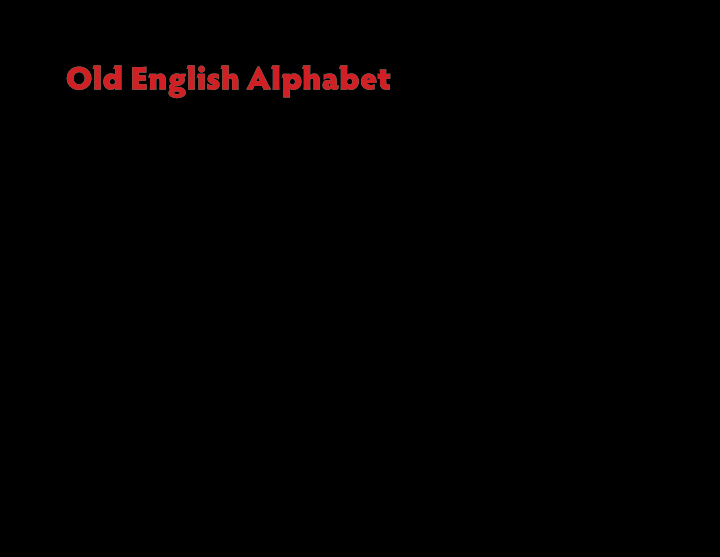



Old English Alphabet 05.23.13 || English 2322: British Literature: Anglo-Saxon — Mid 18th Century || D. Glen Smith, instructor
Old English Alphabet Majuscule forms (uppercase) A Æ B C D Đ E F G H I L M N O P R S T Þ U Ƿ/W X Y Minuscule forms (lowercase) a æ b c d ð m n o p r s/ſ t þ u ƿ/w x y e f g h i l • Æ/ æ (ash): pronounced as tr a p, b a n, sh a ll; represents paired vowel sounds The name of the poet Cædmon is pronounced therefore with a soft “a” sound. Still in use today. • Đ /ð (eth): representing “th”: th y, fur th er, th at Fell out of use during the Middle English period. • The long s ( ſ ) remained in frequent use for a number of centuries. It fell out use during the second half of the Eighteenth Century. The letter is placed when a “s” is required in the beginning or middle of a word: ſucceſs (success). Can be confused with the minuscle letter form “f” when read too quickly. • Þ/ þ (thorn): similar to eth, representing “th” However, thorn remained in use for some Middle English dialects. 2 05.23.13 || English 2322: British Literature: Anglo-Saxon — Mid 18th Century || D. Glen Smith, instructor
Old English Alphabet A standardized alphabet did not emerge for the Anglo-Saxons until somewhere between the Ninth and Twelfth Century. • The standard alphabet for Old English is based on the Latin Alphabet and the Anglo-Saxon Runic letters. • Runes fell out of use by the Tenth Century. • Minuscule forms of letters were not invented until the Middle Ages. • The influence of French language under the Normans provided letters: J, K, Q, and Z. 3 05.23.13 || English 2322: British Literature: Anglo-Saxon — Mid 18th Century || D. Glen Smith, instructor
Recommend
More recommend